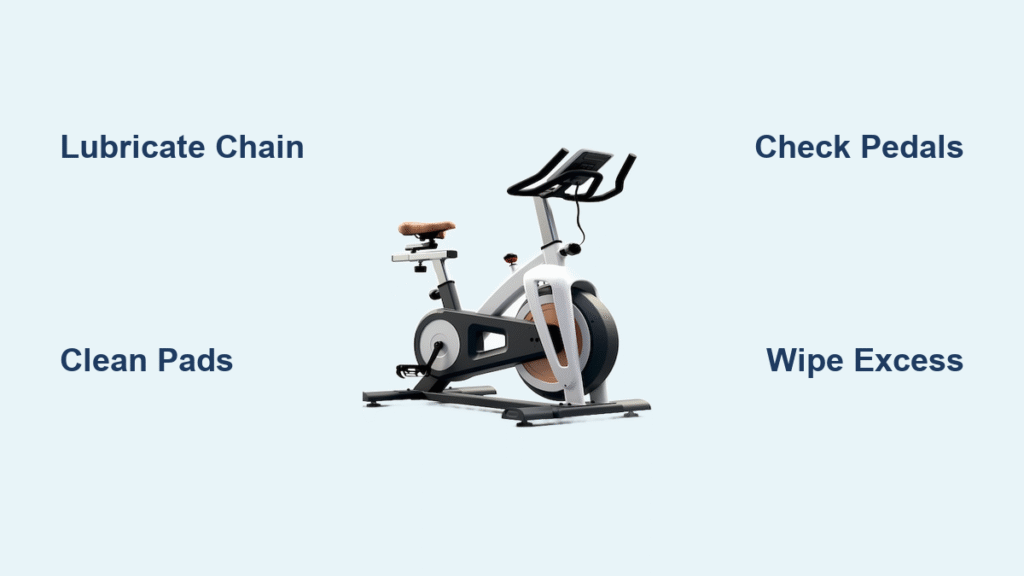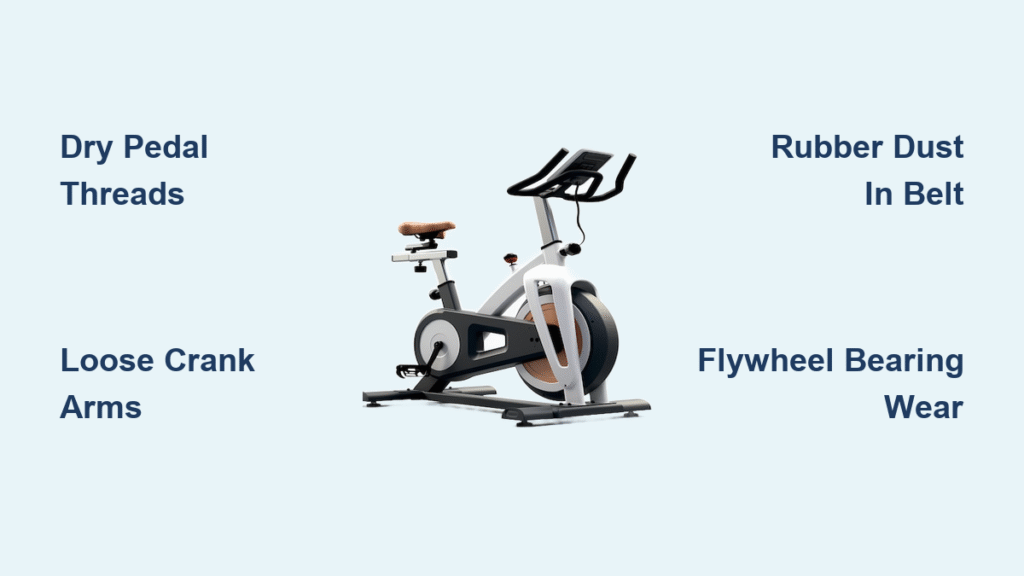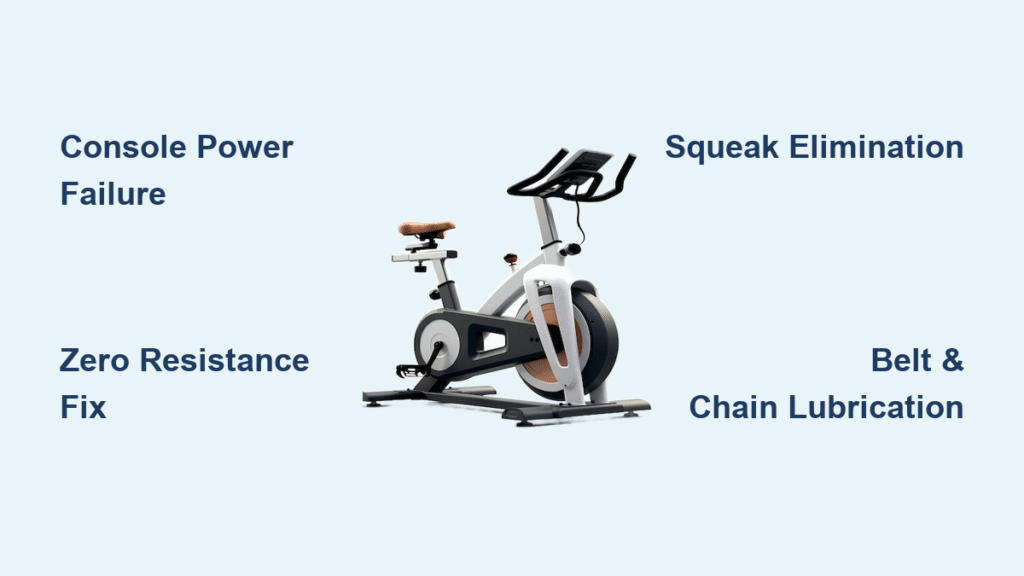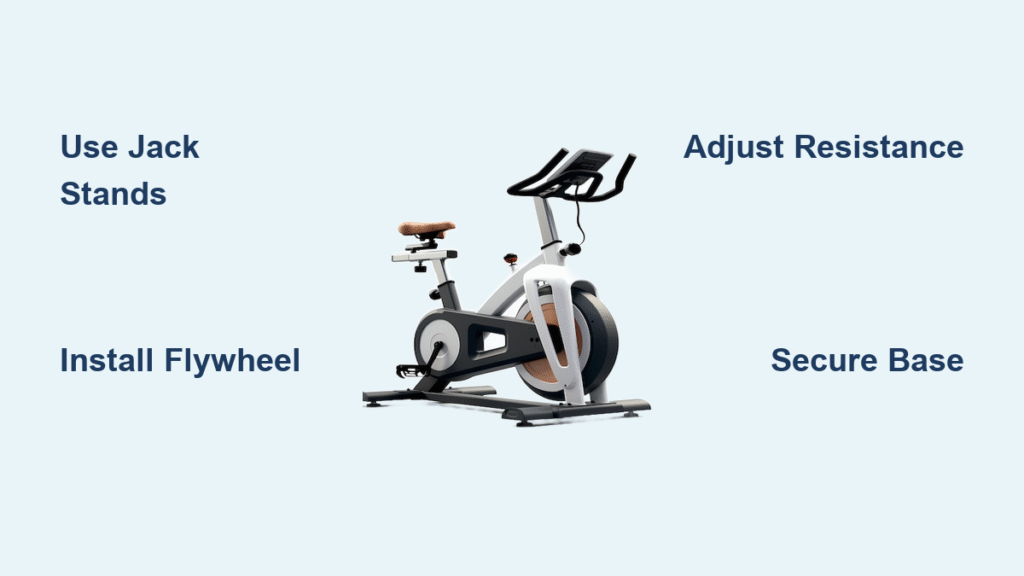Your exercise bike starts squeaking during morning workouts, resistance feels gritty, and every pedal stroke becomes a chore. That annoying noise isn’t just distracting—it’s a warning sign of friction damage accelerating wear on critical components. Ignoring proper lubrication causes 80% of preventable exercise bike failures according to manufacturer service data. The good news? You can restore smooth, silent operation in under 30 minutes with the right techniques. This complete guide shows you exactly how to lubricate every component of your exercise bike based on real technician procedures, eliminating guesswork and extending your machine’s lifespan by years.
Essential Lubrication Products for Your Bike

Using the wrong lubricant destroys components faster than no lubrication. WD-40 instantly strips protective chain coatings despite its popularity, while motor oil attracts dust like a magnet. Grab these specific products before starting:
- Chain lubricant: DuPont Teflon Chain Lubricant only (bicycle-specific formula)
- Multi-purpose lubricant: Super Lube synthetic for non-chain points
- Brake pad oil: 3-IN-ONE silicone oil for leather resistance pads
- Moving parts lubricant: WD-40 Specialist High Performance Silicone
- Anti-seize compound: For bolts and threaded connections
- Bicycle grease: Finish Line or Pedro’s for bearings
Critical tip: Store all lubricants below 75°F away from sunlight. Chain lube expires in 2 years—check the can for manufacturing dates. Always wipe excess lubricant immediately; a thin film protects, but buildup attracts grime that accelerates wear.
Safety First: Pre-Lubrication Steps
Unplug your bike immediately before touching any components. Electricity and lubricants create fire hazards when fluids contact electrical connections. Turn the resistance knob fully clockwise to lock pedals—this prevents dangerous chain movement during lubrication. Never skip this step even for quick chain applications.
Check your owner’s manual for warranty-critical restrictions. Some manufacturers void coverage if you lubricate internal resistance mechanisms or use non-approved products. For example, Peloton bikes require specific service procedures that void warranties if bypassed. When uncertain, focus only on external lubrication points like seat posts and chain guards.
Daily Post-Ride Maintenance (5 Minutes)
Release resistance completely after every workout. Turn the knob counterclockwise until the brake pad lifts fully off the flywheel. Trapped moisture between pad and wheel causes 90% of squeaking issues and rust buildup. This single step prevents overnight corrosion that requires deep cleaning later.
Wipe all sweat-contact points with a microfiber towel:
– Seat post collar (moisture here causes seizing)
– Handlebar adjustment holes (dust + sweat = concrete-like buildup)
– Chain guard vents (prevents chain contamination)
Test pedal tightness immediately while the bike’s warm. Engage resistance and feel for play—loose pedals create distinctive clicking sounds. Tighten using a metric wrench: rotate pedals toward the bike’s front (clockwise when facing the crank arm). Skip this, and you’ll damage crank threads within weeks.
Weekly Lubrication Tasks
Pop Pin Maintenance
Loose frame fittings cause dangerous wobbling during high-resistance intervals. Every Saturday, pull each seat and handlebar pin completely out. Spray Super Lube directly onto the metal shaft—not the plastic housing—then reinsert. Test smooth operation by adjusting height; gritty movement means insufficient lubricant. Wipe excess fluid to prevent attracting gym dust.
Seat and Handlebar Posts
Seized posts ruin your riding position and require costly replacements. Remove both posts weekly using an Allen wrench. Clean insertion points with SpinTech Polish on a soft cloth, checking for white crystalline buildup (salt deposits from sweat). Apply one drop of silicone lubricant to the post before reinsertion—this creates a moisture barrier preventing corrosion. Never use oil here; it attracts debris that causes grinding.
Monthly Deep Lubrication
Chain Drive Bikes Only
Belt drives skip this step entirely—lubricating them causes slippage. For chain drives, monthly maintenance prevents 70% of premature wear. Remove the chain cover (typically 2-4 Phillips screws), then slowly rotate pedals while applying DuPont Teflon lube to the chain’s inner rollers. Cover every link but stop before drips form. Immediately wipe excess with a dry cloth—residual lube collects metal shavings that act like sandpaper. Recheck tension: more than 1/2 inch vertical chain movement requires adjustment via rear axle nuts.
Brake Tension Rod Service
A dry tension rod creates jerky resistance changes that strain your knees. Remove the access panel near the flywheel, then clean the entire rod with WD-40 Bike Cleaner. Apply a hair-thin coat of Super Lube along its length using a cotton swab. Inspect threads—if any appear stripped, replace immediately to prevent sudden resistance failure mid-ride. Wipe thoroughly to avoid contaminating the flywheel.
Comprehensive Moving Parts
Lubricate every adjustment point with WD-40 Specialist Silicone:
– Seat height mechanism (spray into collar gap)
– Handlebar tilt hinge (apply while moving parts)
– Pedal axles (rotate pedals while spraying)
– Resistance knob threads
Focus on movement points only—never spray near brake pads or flywheels where lubricant causes slippage.
Specialized Component Lubrication

Leather Brake Pads
Models requiring this: Schwinn L/A/P Series, Bowflex Elite, and Blade Ion bikes. Signs you need lubrication: Squealing during pedaling or glazed pad surfaces. Turn resistance until the pad lightly contacts the flywheel. Apply one drop of 3-IN-ONE silicone oil to the flywheel edge—not the pad—and rotate the wheel 10 full turns. Immediately wipe all oil residue with a paper towel; excess attracts dust that creates grinding. Test resistance smoothness before riding.
Pop-Pin Deep Service (Every 3 Months)
Complete disassembly prevents permanent seizing. Unscrew pins fully, then remove all old grease with a dry cloth. Apply a rice-grain-sized dot of anti-seize compound only to threads—never the spring mechanism. Reinsert slowly while testing resistance; gritty movement means debris remains. Wipe the frame collar to prevent lubricant migration into adjustment holes.
Troubleshooting Common Issues

Persistent squeaking? Diagnose by location:
– Chain area: Re-lubricate and check tension (slack >1/2 inch)
– Seat post: Clean insertion point and reapply silicone lube
– Brake system: Condition leather pads or clean magnetic sensors
– Pedal bearings: Pack grease into unsealed crank arms
Rough resistance changes indicate:
– Dry brake tension rod (lubricate immediately)
– Contaminated flywheel (clean with dry cloth)
– Misaligned brake pad (adjust per manual)
Pedal wobble means:
– Loose pedal threads (tighten clockwise)
– Worn crank bearings (requires professional service)
– Crank arm bolt failure (re-torque to 35-40 ft/lbs)
Maintenance Schedule Quick Reference
Daily (2 minutes):
– Wipe sweat-contact points
– Release resistance fully
– Check pedal tightness
Weekly (10 minutes):
– Lubricate pop pins
– Clean seat/handlebar posts
– Inspect resistance pads
Monthly (25 minutes):
– Lubricate chain (chain drives)
– Service tension rod
– Lubricate all moving joints
Every 3 months:
– Deep clean pop pins
– Condition leather brake pads
Final Lubrication Checklist
Before your next workout, verify:
– [ ] Seat and handlebars adjust smoothly
– [ ] Zero squeaks during pedal rotation
– [ ] Chain has invisible protective film (chain drives)
– [ ] Resistance changes feel buttery smooth
– [ ] No play in pedals or crank arms
Pro tip: Keep a maintenance log in your phone notes. Record lubrication dates and unusual sounds—this reveals patterns like “chain squeaks every 6 weeks in humid weather” allowing preemptive fixes. Proper lubrication extends exercise bike life by 5+ years; most “broken” bikes fail due to neglected friction points, not mechanical defects. Stick to this routine, and your bike will deliver silent, smooth workouts for thousands of miles.




